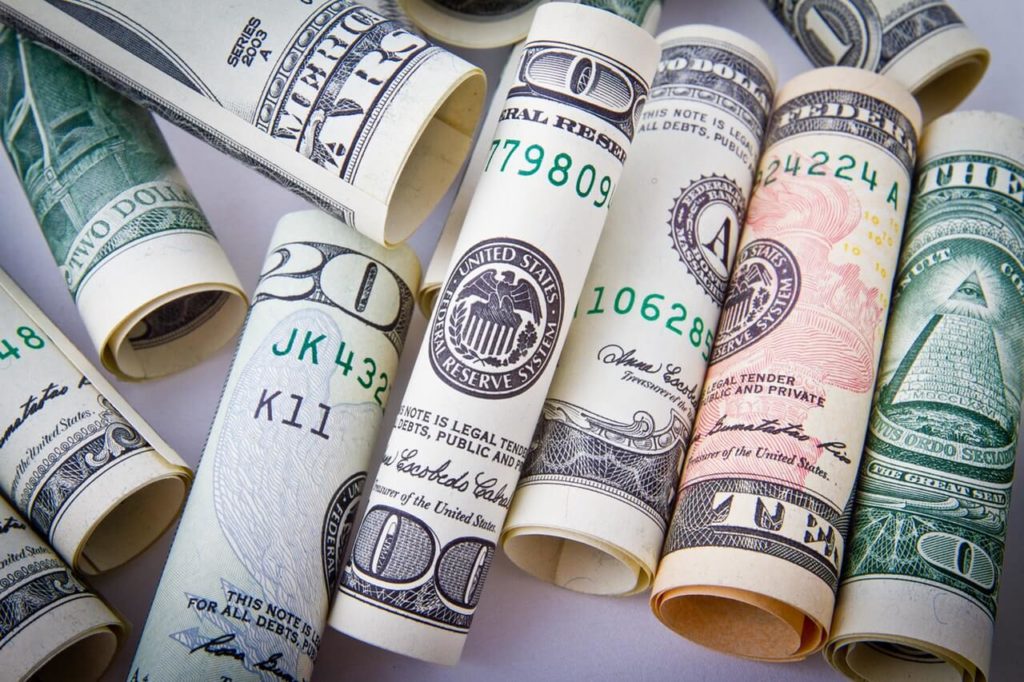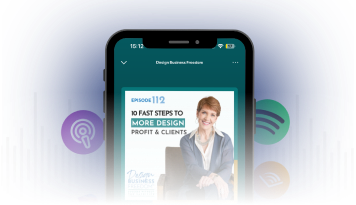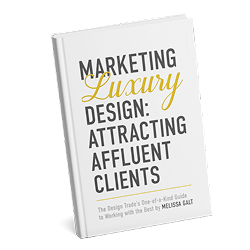6 Ways to Calculate Interior Design Fees with Transparency
Setting and calculating interior design fees today is quite possibly the most challenging part of growing your interior design practice. You want to be fair to clients and transparent, at the same time you want to make a good living and have a profitable business that you love. The two aren’t mutually exclusive.
In fact, when you know how to calculate your interior design fees consistently with ease and they are transparent so your client maintains their trust in you, you’ll find yourself with better clients, more generous projects, and an interior design practice that is profitable and you can be proud of it.
In today’s marketplace, clients, more than ever before, want costs to be controlled and they want to avoid surprises. They also have unprecedented access both online and offline to goods and materials that used to be the exclusive domain of the designer. The rates I’m going to share here will protect your bottom line and give you confidence while your client will feel comfortable paying you for your value in a clear and understandable way.
Your responsibility is to find the right rate or combination of rates that works in your unique practice. How businesses are run varies from state to state and country to country. Knowing your market will go a long way toward making the best decision for your business.

The right rates mean your client agrees to your fees.
#1 Fixed or Flat Fee
Perhaps the most popular of all interior design fees today, the flat or fixed fee, can also be the most complex to calculate. At the time you provide your fee, you often haven’t determined if the client is going to require a lot of extra hand holding and be indecisive extending the scope and timeline of the project, or if they are decisive and everything stays on track. You can always include a clause in your agreement to protect you against such unknowns.
Determining the best fixed or flat fee is often simpler if you’ve been in business for a few years and can anticipate what a project will require. You can base it on hours and then add a 15% or more buffer to protect you from unexpected over runs. I like to offer a fixed or flat fee to be paid in full at a lesser rate than another payment option so it incentivizes my client to pay upfront and then I move extra quickly to get the project wrapped up.
You’ll most often see fixed or flat interior design fees for online design. The big box retailers charge as little as $69/room while custom designers for online interiors like the legendary Windsor Smith have a fee starting at $1250/room (yes, you do get what you pay for.) And if you pay close attention, you’ll notice that on Windsor Smith the fees are also paired to square footage.
#2 Interior Design Fees by the Square Foot (or Meter)
This method is very simple and works well when you are doing a sizable space like a great room, master bedroom, or good sized kitchen. Using the range of $10-$17/square foot, if you were taking on a room that was 15×20 your fee would range from $3000 – $5100, depending on whether you used $10 or $17/square foot.
You may want to use this strictly for design services and add a percent to cover all furnishings selected and purchased or you may want to include a percent to cover management of contractors if this is a renovation or remodel.
If, on the other hand, you are doing a small powder bath, this method is likely to leave you short because small spaces often require additional creativity and can take more time. If the bath was just 6×8 your range would be $480-$816 and that isn’t likely to be a good fit unless this is a DIY client and this is consulting only.
#3 Percent of Project Cost
Personally, my favorite method to use for calculating interior design fees is percent of project cost. It is incredibly simple from an invoicing perspective and it includes complete transparency which many designers are reluctant to do. Provide the client with an estimate of the project including furnishings, fixtures, finishes, installation, contractors and more. If you are concerned about them pulling it apart, you can establish a minimum project value to ensure you get a minimum fee. The percent that you establish goes on top of the project costs, 30-45% is typical in interior design fees.
In invoicing for this, you can schedule payments to coincide with specific project benchmarks. In addition, I like to provide my client with copies of all vendor billings (full transparency) and then my invoice showing my percent added for billing purposes. Most design firms do not want to reveal their sources. I am willing to reveal mine once everything is ordered since I’m proving transparency by providing my invoices at the close. You choose what works for you.

You’ll increase your confidence with the right interior design fees and attract better clients.
#4 Interior Design Fees with Retail Pricing Only
There are a few designers I work who use this method. In today’s world of discount everything, even at the top levels, it can be challenging to employ. You must be working with product that your client isn’t able to find anyplace else so you won’t be shopped. And the retail covers all of your design time as well as any markup you’d have on furnishings. You have to ensure that if your client goes online they won’t find the same piece for less; that’s what makes this method challenging and why few today use this.
The other caveat with this method is that you can do a lot of design before a client decides to make purchases and if your only compensation is tied to purchases, you can lose money quickly. You may design an entire room and they’ll decide to buy only a couple of pieces and do the rest on their own. While your letter of agreement can stipulate otherwise, would you really argue that with a client?
#5 Hourly Interior Design Fees
This is how many of us started out and many still use it. Rates range per city, per state, per country, and per level of experience. Beginning designers often start at $75-$125 while more established range from $150-$450/hour. It can be challenging to track and unless you estimate upfront, it can be a real surprise to clients how long certain parts of the design process take. As an experienced designer, I’ve always been able to estimate my hours per room and then per project and state that I will not exceed that estimate without my client’s express written consent. That provides peace of mind that it won’t be runaway hours, and it also puts a cap on the hours to be invested.
#6 Interior Design Fees with a Combination Method
It is rare for a designer to work exclusively hourly, most hourly rates are in combination with a percent on top of goods sold ranging from 25-35% over cost. Or in some cases a designer will split their trade discounts with their client and not include a markup. Unfortunately, that is often not disclosed.
One designer told me that she was sure that her clients knew that there was a markup of 25% so she didn’t say anything. She also didn’t use a letter of agreement. (An agreement protects both you and your client and provides invaluable clarity.) You can imagine the repercussions if her clients found out and didn’t “know” as she thought they did. Transparency is essential; honesty builds trust.
Many designers use a combination of methods described here. While I’m an advocate for maximizing your return on every project, be aware that the more complicated you make it, the more likely your client is to feel overwhelmed and unwilling to agree. The internet and HGTV have dramatically impacted our design industry. What worked on fees just 5 years ago, often has to be updated to reflect today’s empowered consumer and lack of trade protection and exclusive access.
How much you charge depends less on your talent and experience than it does on your positioning, your confidence, and your ability to build trust and maintain it. I’ve worked with designers who’ve been in business for over 20 years and charge what a new designer would and designers new to the field and ready to step in at a more established rate.
If you think your interior design practice would benefit from a rate review, get in touch with me here. My goal, as a successful residential designer for over 2 decades and coach to the trade, is to guide you into establishing rates and interior design fees that will build your bottom line and attract great clients. Having the right rates will build your confidence and your business.



